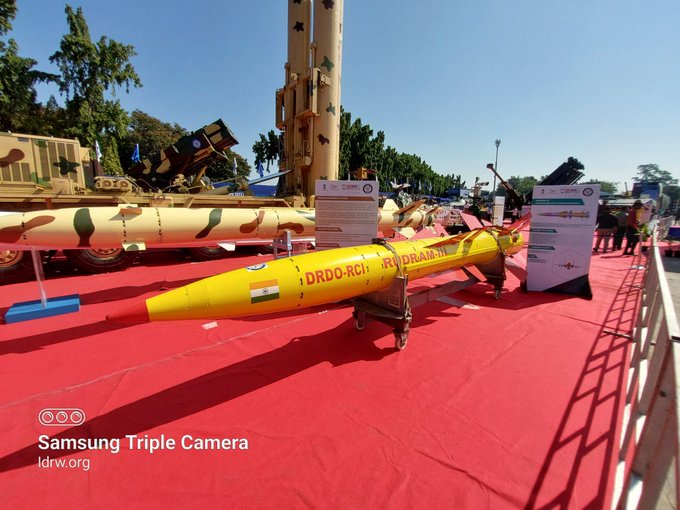SOURCE: RAUNAK KUNDE / NEWS BEAT / IDRW.ORG


The Indian Air Force (IAF) is gearing up for the next stage in its development of the RudraM series of air-to-surface missiles. According to sources close to idrw.org, HAL Nashik Division has completed modifications on Su-30 MKI aircraft (SB-214) to enable captive flight trials of the RudraM-III, a long-range variant boasting impressive capabilities.
The RudraM-III, weighing 1.6 tons, packs a punch with its 300-400kg warhead and a staggering 600km range when launched from an 11km altitude at Mach 0.9. This significant reach surpasses its predecessors, the RudraM and RudraM-II, and expands the IAF’s strike capabilities.
Modifications to Su-30MKI aircraft SB-214 involved stations No. 5 and 6, specifically designed to integrate and test the RudraM-III. These captive flight trials will offer crucial data on the missile’s performance and pave the way for future weaponization.
Beyond its impressive range, the RudraM-III can engage a variety of targets, including radar installations, bunkers, airstrips, and air hangers. This versatility makes it a valuable asset in diverse combat scenarios.
While the Su-30MKI will initially be the sole platform cleared to carry the RudraM-III, plans envision equipping the Tejas Mk2 with both RudraM-II and RudraM-III variants, excluding the Tejas Mk1A.
The RudraM series builds upon India’s indigenous missile development program. The RudraM and RudraM-II have already demonstrated their capabilities, and the RudraM-III promises to further enhance the IAF’s air-to-surface strike power with its extended range and versatility.
NOTE : Article cannot be reproduced without written permission of idrw.org in any form even for YouTube Videos to avoid Copy right strikes. Websites doing illegal reproductions will get DMCA and Legal Notices.